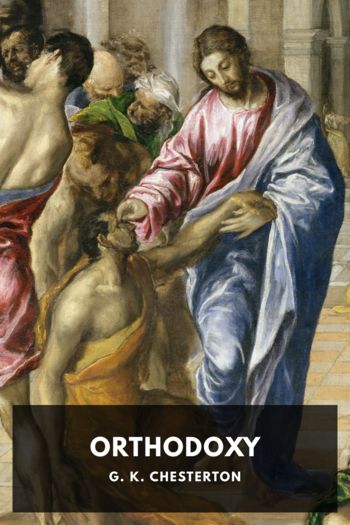
Description
Orthodoxy is G. K. Chesterton’s response to his critics’ assertion that his earlier collection of essays, Heretics, had “merely criticised current philosophies without offering any alternative philosophy.” In his intellectual journey from pagan to agnostic to positivist philosopher, he had attempted to build a philosophy “some ten minutes in advance of the truth.” But when he compared his modern philosophy with Christian theology, he realized that he was “the man who with the utmost daring discovered what had been discovered before.” Thus, Orthodoxy is a work of Christian apologetics, where Chesterton tries to show that Christianity is a universal answer to the everyday needs of humanity, and not just an arbitrary philosophy handed down from on high.
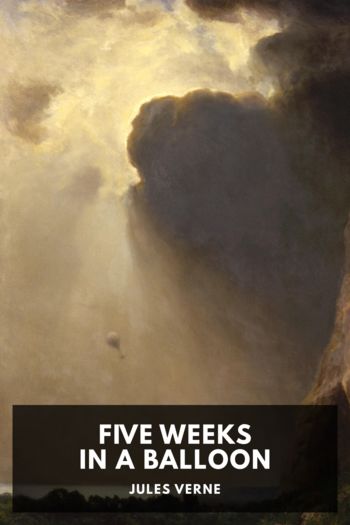
Description
Five Weeks in a Balloon tells the tale of three Englishmen who attempt to cross Africa, from east to west, in a balloon. Dr. Ferguson is the rational scientist leading the trio, accompanied by loyal sidekick Joe and the doctor’s sporting friend Kennedy.
The three embark on many adventures: They encounter natives and dangerous animals, experience problems with their ballooning technology, and struggle with the winds and the weather. Throughout the novel, the author liberally sprinkles descriptions of flora, fauna, and geography, as seen through nineteenth century eyes.
Though this is Verne’s first published book, he already demonstrates much of the formula that drive his later works: the well-defined characters led by a rational scientist, the focus on science and technology, and of course the adventure-filled plot.
The novel, first published in 1863, was topical for its time, as European interest in African exploration was strong. At the time the book was published, David Livingstone was midst-exploration in south-east Africa, and Burton and Speke had recently returned from exploring the Great Lakes region. The novel itself contains many references to actual expeditions that would have been current or recent for the original readers of the novel.

Description
The popular history of William Frederick “Buffalo Bill” Cody remains more myth than anything else, yet it’s undeniable that he was a central figure in the American Old West. Pony Express rider, stagecoach driver, trapper, soldier, bison hunter, scout, showman—his résumé reads like the quintessential record of all that makes up the Old West mythology, and it’s all documented in this, his original 1879 autobiography.
While The Life of Buffalo Bill is rife with the dramatic stylings of the dime novels and stage melodramas so popular at the time, in it Cody presents his version of his life: from his boyhood settling in the newly-opened Kansas territory, to his early life as a frontiersman. It was written when Cody was only thirty-three years old, just after he started his career as a showman and a few years before he created his world famous Buffalo Bill’s Wild West show. Originally titled The Life of Hon. William F. Cody Known as Buffalo Bill the Famous Hunter, Scout, and Guide: An Autobiography, it is an arguably more accurate account of both his life and the American West than the later 1917 autobiography The Great West That Was: “Buffalo Bill’s” Life Story which was ghostwritten by James Montague and published after his death. Although it makes many claims that are disputed today, The Life of Buffalo Bill reveals much about both the historical William F. Cody and the Buffalo Bill of American legend, and gives insight into the history of the American West.
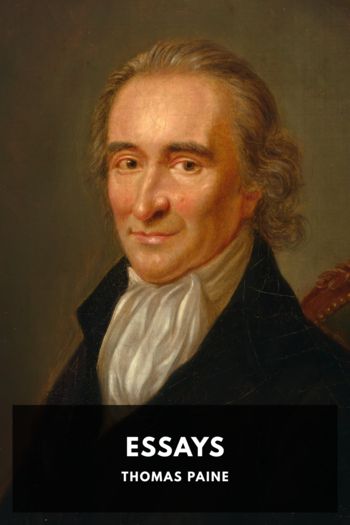
Description
Thomas Paine was an American political commentator and activist in the latter part of the eighteenth century. His writing covered a wide range of subjects, but were centered on his core beliefs of republicanism and the inherent rights of people. An early pamphlet of his, “Common Sense,” was written soon after he arrived in America from Great Britain; with its focus on the ills of colonialism and the King’s veering between rational debate and righteous outrage, it has been cited as one of the major catalysts for the American Revolution. Later work attempted to correct the mistakes he perceived in post-revolution French government—written from experience after his election to the French National Convention—and even suggested a costed plan for a universal basic income funded by an inheritance tax.
Collected here are his essays and pamphlets written between 1776 and 1797, including the aforementioned “Common Sense” and other influential works like “The Republican Proclamation” and the “Declaration of Rights.”
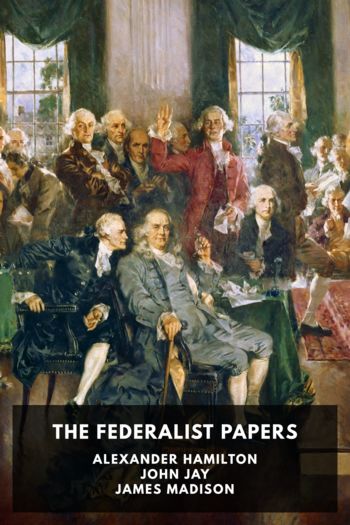
Description
In early 1787, the Congress of the United States called a meeting of delegates from each state to try to fix what was wrong with the Articles of Confederation. The Articles had created an intentionally weak central government, and that weakness had brought the nation to a crisis in only a few years. Over the next several months, the delegates worked to produce the document that would become the U.S. Constitution.
When Congress released the proposed Constitution to the states for ratification in the fall of 1787, reaction was swift: in newspapers throughout each state, columnists were quick to condemn the radical reworking of the nation’s formative document. In New York State, a member of the convention decided to launch into the fray; he and two other men he recruited began writing their own anonymous series defending the proposed Constitution, each one signed “Publius.” They published seventy-seven articles in four different New York papers over the course of several months. When the articles were collected and published as a book early the following year, the authors added another eight articles. Although many at the time guessed the true identities of the authors, it would be a few years before the authors were confirmed to be Alexander Hamilton, James Madison, and John Jay, Hamilton and Madison both being delegates at the convention.
Although the articles’ influence on the Constitution’s ratification is debated—newspapers were largely local at the time, so few outside New York saw the articles—their influence on the interpretation of the Constitution within the judiciary is immense. They are a window not only into the structure and content of the document, but also the reasons for the structure and content, written by men who helped author the document. Consequently, they have been quoted almost 300 times in Supreme Court cases. They remain perhaps the best and clearest explanation of the document that is the cornerstone of the United States government.
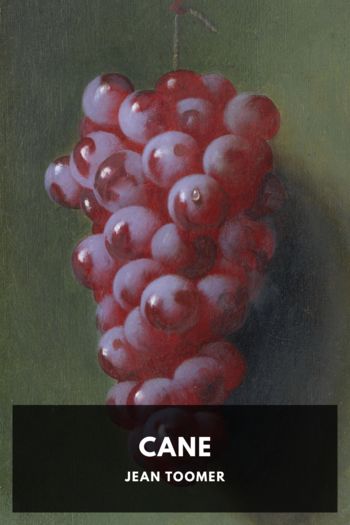
Description
Published in 1923, Jean Toomer’s Cane was widely heralded as one of the first masterpieces of the Harlem Renaissance, and its author as “a bright morning star” of the movement. Toomer himself, however, was reluctant to embrace an explicitly racialized identity, preferring to define himself as simply an American writer.
Inspired in part by Sherwood Anderson’s short story cycle Winesburg, Ohio, Toomer conceived Cane as a mosaic of intricately connected vignettes, poems, stories, songs, and even play-like dialogues. Drawing on both modernist poetry and African-American spirituals, Toomer imbues each form with a lyrical and often experimental sensibility.
The work is structured in three distinct but unnamed parts. The first is set in rural Georgia and focuses on the lives of women and the men who desire them. The second part moves to the urban enclaves of the North in the years following the Great Migration. The third and final part returns to the rural South and explores the interactions between African-Americans from the North and those living in the South.
Although sales languished in the later years of Toomer’s life, the book was reissued after his death and rediscovered by a new generation of American writers. Alice Walker described Cane as one of the most important books in her own development as a writer: “I love it passionately, could not possibly exist without it.”
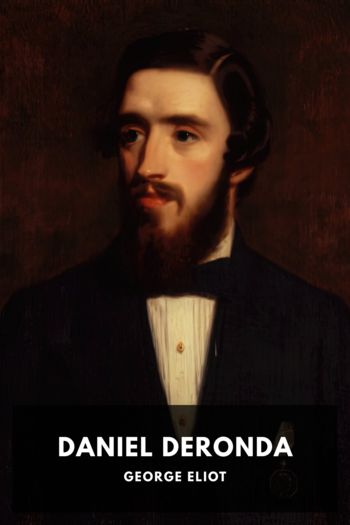
Description
Daniel Deronda, published in 1876, was George Eliot’s last novel. It deals with two major characters whose lives intersect: One is a spoiled young woman named Gwendolen Harleth who makes an unwise marriage to escape impending poverty; the other is the titular character, Daniel Deronda, a wealthy young man who feels a mission to help the suffering.
During her childhood Gwendolen’s family was well-off. She lived in comfort and was indulged and pampered. But the family’s fortune is lost through an unwise investment, and she returns to a life of near-poverty, a change which she greatly resents both for herself and for her widowed mother. The only escape seems to be for her to marry a wealthy older man who has been courting her in a casual, unemotional way. The marriage turns out to be a terrible mistake.
Daniel Deronda has been raised by Sir Hugo Mallinger as his nephew, but Daniel has never discovered his true parentage, thinking it likely that he is Sir Hugo’s natural son. This consciousness of his probable illegitimacy moves him to kindness and tolerance towards anyone who is suffering from disadvantage. One evening, while rowing on the river Thames, he spots a young woman about to leap into the water to drown herself. He persuades her instead to come with him for shelter to a family he knows. The young woman turns out to be Jewish, and through his trying to help her find her lost family, Deronda comes into contact with Jewish culture—and in particular with a man named Mordecai, who has a passionate vision for the future of the Jewish race and who sees in Daniel a kindred spirit.
The paths that Gwendolen and Daniel follow intersect often, and Daniel’s kindly nature moves him to try to offer her comfort and advice in her moments of distress. Unsurprisingly, Gwendolen misinterprets Daniel’s attentions.
In Daniel Deronda Eliot demonstrates considerable sympathy towards the Jewish people, their culture, and their aspirations for a national homeland. At the time this was an unpopular and even controversial view. A foreword in this edition reproduces a letter Evans wrote to Harriet Beecher Stowe, defending her stance in this regard. Nevertheless, the novel was a success, and was translated almost immediately into German and Dutch. It is considered to have had a positive influence on Zionist thinkers.
Daniel Deronda has been adapted both for film and television, with the 2002 B.B.C. series winning several awards.

Description
In The Servile State, British-French writer and historian Hilaire Belloc makes a provocative case that capitalism will inevitably move toward the reestablishment of slavery. The thesis in this book forms the backbone of Belloc’s life-long effort as an advocate for reform to the existing socioeconomic system in the direction of what he terms as “distributism.”
As a critic of both socialism and capitalism, and a fervent Catholic, Belloc lays out a history of Europe where, over generations, the pagan slavery of the Roman Empire was transformed into a “distributive” model of the Middle Ages. But, he argues, this model was broken by the rise of capitalism in England during the reign of Henry VIII. Ever since, capitalism has been moving ever closer towards the servile state: the restoration of status in the place of contract, and a vast proletariat of wage-earners with few incredibly wealthy owners.

Description
In 1841, Solomon Northup was a free black man, married with three children and living in upstate New York, when he was tricked into going to Washington DC. There, he was drugged, kidnapped, and sold into slavery, eventually ending up on a plantation in the Red River area of Louisiana. For twelve years he experienced and witnessed the arbitrary beatings and whippings, around-the-clock back-breaking work, and countless other degradations that came with being enslaved in the antebellum south. Through the sympathetic ear of a white man and with miraculous timing, he was eventually freed and returned home. He then wrote this memoir and contributed to the abolitionist movement before disappearing from the pages of history.
Like Incidents in the Life of a Slave Girl, Twelve Years a Slave stands in stark contrast to the era’s bucolic propaganda that the enslaved in the south were well treated, well provided for, and made “part of the family.” As a first-hand account, it exposes slavery for what it is: barbaric, dehumanizing, and evil.

Description
The sisters Olga, Masha, and Irina live with their brother Andrey in a provincial Russian town, and plan to return to Moscow, where they grew up, as soon as they’re able. Olga doesn’t want to continue working at the school where she’s a teacher and occasional headmaster; Masha is disillusioned in her marriage; Irina hopes to find her true love; and Andrey shows promise of becoming a professor. Also stationed in their town is a battery of soldiers that provide them with a social life. When Andrey falls in love with Natasha, their hopes for change are dashed, bit by bit.
First performed in 1901 at the Moscow Art Theatre, Three Sisters is considered one of Chekhov’s best plays. While critical reception at the time was mixed, the show was popular enough to become a part of the company’s repertoire, and is still commonly staged and adapted today.

Description
Orthodoxy is G. K. Chesterton’s response to his critics’ assertion that his earlier collection of essays, Heretics, had “merely criticised current philosophies without offering any alternative philosophy.” In his intellectual journey from pagan to agnostic to positivist philosopher, he had attempted to build a philosophy “some ten minutes in advance of the truth.” But when he compared his modern philosophy with Christian theology, he realized that he was “the man who with the utmost daring discovered what had been discovered before.” Thus, Orthodoxy is a work of Christian apologetics, where Chesterton tries to show that Christianity is a universal answer to the everyday needs of humanity, and not just an arbitrary philosophy handed down from on high.

Description
Five Weeks in a Balloon tells the tale of three Englishmen who attempt to cross Africa, from east to west, in a balloon. Dr. Ferguson is the rational scientist leading the trio, accompanied by loyal sidekick Joe and the doctor’s sporting friend Kennedy.
The three embark on many adventures: They encounter natives and dangerous animals, experience problems with their ballooning technology, and struggle with the winds and the weather. Throughout the novel, the author liberally sprinkles descriptions of flora, fauna, and geography, as seen through nineteenth century eyes.
Though this is Verne’s first published book, he already demonstrates much of the formula that drive his later works: the well-defined characters led by a rational scientist, the focus on science and technology, and of course the adventure-filled plot.
The novel, first published in 1863, was topical for its time, as European interest in African exploration was strong. At the time the book was published, David Livingstone was midst-exploration in south-east Africa, and Burton and Speke had recently returned from exploring the Great Lakes region. The novel itself contains many references to actual expeditions that would have been current or recent for the original readers of the novel.

Description
The popular history of William Frederick “Buffalo Bill” Cody remains more myth than anything else, yet it’s undeniable that he was a central figure in the American Old West. Pony Express rider, stagecoach driver, trapper, soldier, bison hunter, scout, showman—his résumé reads like the quintessential record of all that makes up the Old West mythology, and it’s all documented in this, his original 1879 autobiography.
While The Life of Buffalo Bill is rife with the dramatic stylings of the dime novels and stage melodramas so popular at the time, in it Cody presents his version of his life: from his boyhood settling in the newly-opened Kansas territory, to his early life as a frontiersman. It was written when Cody was only thirty-three years old, just after he started his career as a showman and a few years before he created his world famous Buffalo Bill’s Wild West show. Originally titled The Life of Hon. William F. Cody Known as Buffalo Bill the Famous Hunter, Scout, and Guide: An Autobiography, it is an arguably more accurate account of both his life and the American West than the later 1917 autobiography The Great West That Was: “Buffalo Bill’s” Life Story which was ghostwritten by James Montague and published after his death. Although it makes many claims that are disputed today, The Life of Buffalo Bill reveals much about both the historical William F. Cody and the Buffalo Bill of American legend, and gives insight into the history of the American West.

Description
Thomas Paine was an American political commentator and activist in the latter part of the eighteenth century. His writing covered a wide range of subjects, but were centered on his core beliefs of republicanism and the inherent rights of people. An early pamphlet of his, “Common Sense,” was written soon after he arrived in America from Great Britain; with its focus on the ills of colonialism and the King’s veering between rational debate and righteous outrage, it has been cited as one of the major catalysts for the American Revolution. Later work attempted to correct the mistakes he perceived in post-revolution French government—written from experience after his election to the French National Convention—and even suggested a costed plan for a universal basic income funded by an inheritance tax.
Collected here are his essays and pamphlets written between 1776 and 1797, including the aforementioned “Common Sense” and other influential works like “The Republican Proclamation” and the “Declaration of Rights.”

Description
In early 1787, the Congress of the United States called a meeting of delegates from each state to try to fix what was wrong with the Articles of Confederation. The Articles had created an intentionally weak central government, and that weakness had brought the nation to a crisis in only a few years. Over the next several months, the delegates worked to produce the document that would become the U.S. Constitution.
When Congress released the proposed Constitution to the states for ratification in the fall of 1787, reaction was swift: in newspapers throughout each state, columnists were quick to condemn the radical reworking of the nation’s formative document. In New York State, a member of the convention decided to launch into the fray; he and two other men he recruited began writing their own anonymous series defending the proposed Constitution, each one signed “Publius.” They published seventy-seven articles in four different New York papers over the course of several months. When the articles were collected and published as a book early the following year, the authors added another eight articles. Although many at the time guessed the true identities of the authors, it would be a few years before the authors were confirmed to be Alexander Hamilton, James Madison, and John Jay, Hamilton and Madison both being delegates at the convention.
Although the articles’ influence on the Constitution’s ratification is debated—newspapers were largely local at the time, so few outside New York saw the articles—their influence on the interpretation of the Constitution within the judiciary is immense. They are a window not only into the structure and content of the document, but also the reasons for the structure and content, written by men who helped author the document. Consequently, they have been quoted almost 300 times in Supreme Court cases. They remain perhaps the best and clearest explanation of the document that is the cornerstone of the United States government.

Description
Published in 1923, Jean Toomer’s Cane was widely heralded as one of the first masterpieces of the Harlem Renaissance, and its author as “a bright morning star” of the movement. Toomer himself, however, was reluctant to embrace an explicitly racialized identity, preferring to define himself as simply an American writer.
Inspired in part by Sherwood Anderson’s short story cycle Winesburg, Ohio, Toomer conceived Cane as a mosaic of intricately connected vignettes, poems, stories, songs, and even play-like dialogues. Drawing on both modernist poetry and African-American spirituals, Toomer imbues each form with a lyrical and often experimental sensibility.
The work is structured in three distinct but unnamed parts. The first is set in rural Georgia and focuses on the lives of women and the men who desire them. The second part moves to the urban enclaves of the North in the years following the Great Migration. The third and final part returns to the rural South and explores the interactions between African-Americans from the North and those living in the South.
Although sales languished in the later years of Toomer’s life, the book was reissued after his death and rediscovered by a new generation of American writers. Alice Walker described Cane as one of the most important books in her own development as a writer: “I love it passionately, could not possibly exist without it.”

Description
Daniel Deronda, published in 1876, was George Eliot’s last novel. It deals with two major characters whose lives intersect: One is a spoiled young woman named Gwendolen Harleth who makes an unwise marriage to escape impending poverty; the other is the titular character, Daniel Deronda, a wealthy young man who feels a mission to help the suffering.
During her childhood Gwendolen’s family was well-off. She lived in comfort and was indulged and pampered. But the family’s fortune is lost through an unwise investment, and she returns to a life of near-poverty, a change which she greatly resents both for herself and for her widowed mother. The only escape seems to be for her to marry a wealthy older man who has been courting her in a casual, unemotional way. The marriage turns out to be a terrible mistake.
Daniel Deronda has been raised by Sir Hugo Mallinger as his nephew, but Daniel has never discovered his true parentage, thinking it likely that he is Sir Hugo’s natural son. This consciousness of his probable illegitimacy moves him to kindness and tolerance towards anyone who is suffering from disadvantage. One evening, while rowing on the river Thames, he spots a young woman about to leap into the water to drown herself. He persuades her instead to come with him for shelter to a family he knows. The young woman turns out to be Jewish, and through his trying to help her find her lost family, Deronda comes into contact with Jewish culture—and in particular with a man named Mordecai, who has a passionate vision for the future of the Jewish race and who sees in Daniel a kindred spirit.
The paths that Gwendolen and Daniel follow intersect often, and Daniel’s kindly nature moves him to try to offer her comfort and advice in her moments of distress. Unsurprisingly, Gwendolen misinterprets Daniel’s attentions.
In Daniel Deronda Eliot demonstrates considerable sympathy towards the Jewish people, their culture, and their aspirations for a national homeland. At the time this was an unpopular and even controversial view. A foreword in this edition reproduces a letter Evans wrote to Harriet Beecher Stowe, defending her stance in this regard. Nevertheless, the novel was a success, and was translated almost immediately into German and Dutch. It is considered to have had a positive influence on Zionist thinkers.
Daniel Deronda has been adapted both for film and television, with the 2002 B.B.C. series winning several awards.

Description
In The Servile State, British-French writer and historian Hilaire Belloc makes a provocative case that capitalism will inevitably move toward the reestablishment of slavery. The thesis in this book forms the backbone of Belloc’s life-long effort as an advocate for reform to the existing socioeconomic system in the direction of what he terms as “distributism.”
As a critic of both socialism and capitalism, and a fervent Catholic, Belloc lays out a history of Europe where, over generations, the pagan slavery of the Roman Empire was transformed into a “distributive” model of the Middle Ages. But, he argues, this model was broken by the rise of capitalism in England during the reign of Henry VIII. Ever since, capitalism has been moving ever closer towards the servile state: the restoration of status in the place of contract, and a vast proletariat of wage-earners with few incredibly wealthy owners.

Description
In 1841, Solomon Northup was a free black man, married with three children and living in upstate New York, when he was tricked into going to Washington DC. There, he was drugged, kidnapped, and sold into slavery, eventually ending up on a plantation in the Red River area of Louisiana. For twelve years he experienced and witnessed the arbitrary beatings and whippings, around-the-clock back-breaking work, and countless other degradations that came with being enslaved in the antebellum south. Through the sympathetic ear of a white man and with miraculous timing, he was eventually freed and returned home. He then wrote this memoir and contributed to the abolitionist movement before disappearing from the pages of history.
Like Incidents in the Life of a Slave Girl, Twelve Years a Slave stands in stark contrast to the era’s bucolic propaganda that the enslaved in the south were well treated, well provided for, and made “part of the family.” As a first-hand account, it exposes slavery for what it is: barbaric, dehumanizing, and evil.

Description
The sisters Olga, Masha, and Irina live with their brother Andrey in a provincial Russian town, and plan to return to Moscow, where they grew up, as soon as they’re able. Olga doesn’t want to continue working at the school where she’s a teacher and occasional headmaster; Masha is disillusioned in her marriage; Irina hopes to find her true love; and Andrey shows promise of becoming a professor. Also stationed in their town is a battery of soldiers that provide them with a social life. When Andrey falls in love with Natasha, their hopes for change are dashed, bit by bit.
First performed in 1901 at the Moscow Art Theatre, Three Sisters is considered one of Chekhov’s best plays. While critical reception at the time was mixed, the show was popular enough to become a part of the company’s repertoire, and is still commonly staged and adapted today.